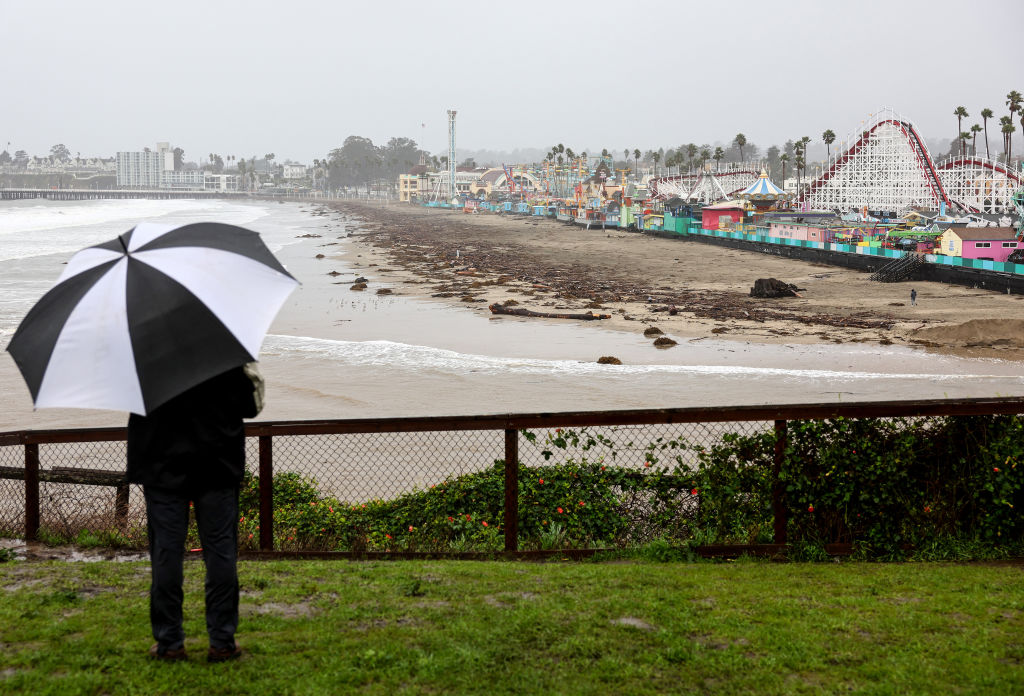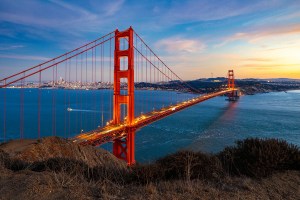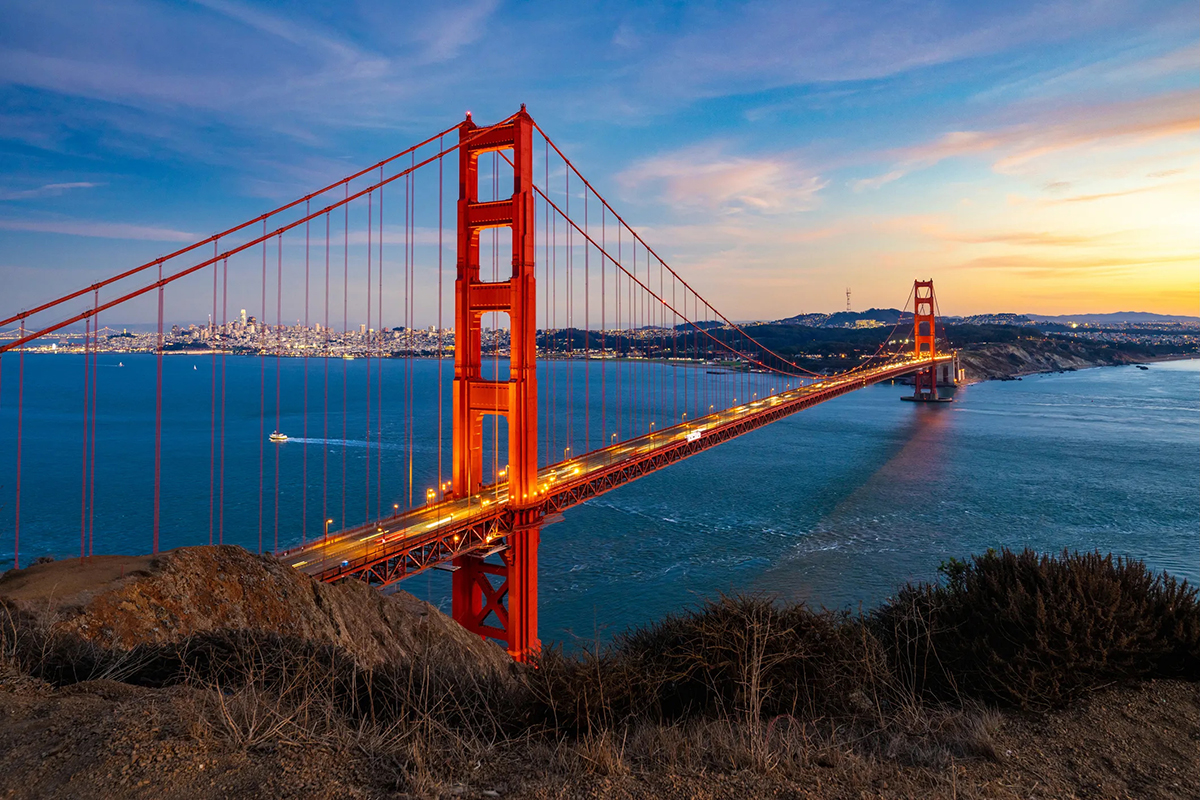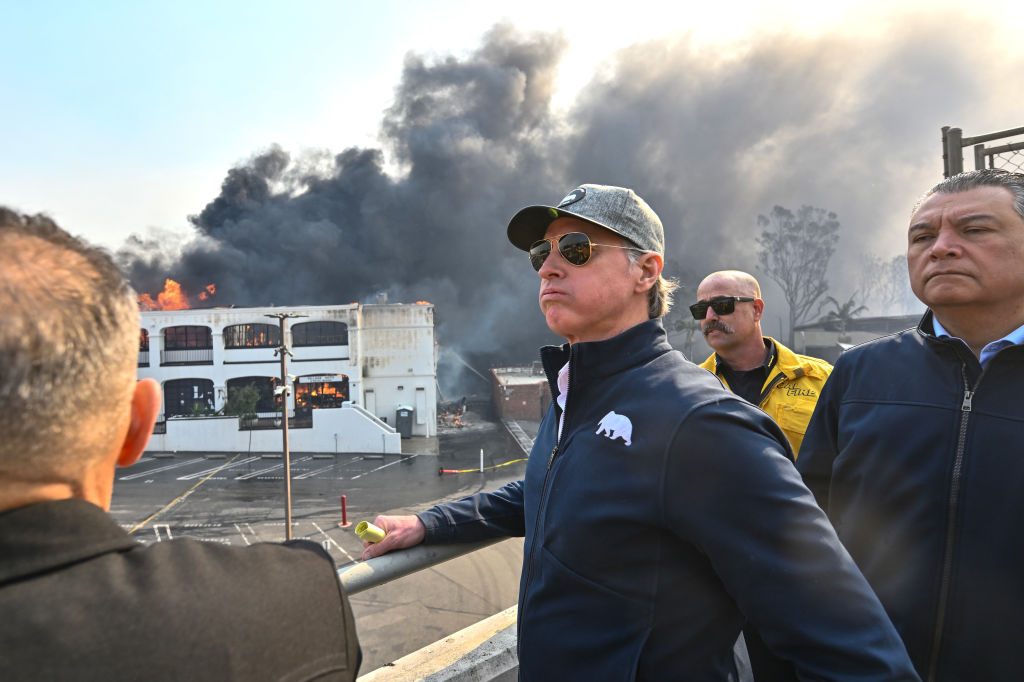No doubt California’s extreme weather makes for dramatic television, and for climate eschatologists it stirs up another round of end-times unease. California cliffs tumbling onto highways and sinkholes appearing out of nowhere have been all over the news. Lowland and flood plains are underwater up and down the state. Dry creeks have been raging torrents.
One Guardian headline goes, “California’s rainstorm hell ‘among the most deadly disasters in our history.’” California governor Gavin Newsom tweets, “California is proof that the climate crisis is real and we have to take it seriously.”
Both the media and Governor Newsom should get a grip. There is no evidence that climate change is to blame for these heavy rains. California has long suffered from extreme weather. Twelve-hour power outages and flooded basements in Palo Alto are not the end of the world. High waters in Montecito are small potatoes compared to 2018, but Harry and Meghan’s supposed perils always make good copy and get easy clicks.
Since Thanksgiving, several storms have swept across the state at intervals, in three or four extended downpours, some of it freakish. On December 31, San Francisco endured six inches of rain. Then another eight inches fell in the following fortnight.
California is having an unusually wet year. This is a good thing. Both the central valley’s agricultural complex and the state’s 40 million-plus residential population rely on the brief winter rainy season and spring melting of the Sierra snowpack for fresh, pure water. Foothill reservoirs from Shasta to Tehachapi are refilling, cleaning, and flushing. California’s natural and built water system statewide is recharging groundwater after three dry years. Indeed, for lack of diversionary channels and storage expansion, at the moment good water is now being released from dams and headed for the Pacific Ocean.
What might seem to be rainstorm hell to headline writers is providing temporary relief from age-old water shortages. California’s weather cycles of dry and flooding are well documented. The American West has been dealing with this arid state of affairs since pioneer days. Much of arable and buildable southern California is flood plain. Flood control statewide and channelization of the Los Angeles river system were major initiatives of the mid-20th century, along with expansion of the Sierra storage system.
These colossal engineering projects have prevented a real weather catastrophe and consequent civilian suffering. California’s able civil engineers keep its water system intact and in top condition. This takes money and vigilance. Both farm and non-farm water need to be free of pesticides, fertilizer run-off, brine, and mineral salts.
California water arrangements are by any measure complicated. Myriad local water districts — some with shady claims — oversee water delivery and tradeoffs. Vested water interests are powerful. Washington controls interstate water and the immense Colorado River system. The Environmental Protection Agency seems to have a hand in everything.
In recent years, California has made steady progress in water conservation, recycling and decreasing waste per capita. Partisan conflict in California makes good water policy pretty much impossible. Progressives think turning bountiful rivers back to nature and endangered species hugging is holy work; the right wants to build dams and reservoirs presto chango, ascribing water shortages to mismanagement and green activism. Improved storage does not overcome geographic realities. Metroplexes from Denver to San Diego rely on water that is captured, stored and moved over long distances to get it to where people live and work.
California and the entire West is already largely a done deal of pumps, siphons, aqueducts, and canals with few new means of supply. Desalinization might provide expensive household and industrial water, but it’s not going to hydrate vast metropolises or irrigate extensive agricultural holdings.
Additional Sierra reservoirs are long overdue, earmarked initiatives, but hard to execute. Even then, nature is unpredictable. It takes rain and snow to fill dams and reservoirs — and even getting there would take many years. And one must ask in these times: will new water projects end up throwing billions down an infrastructural rat hole as with the risible California fast-rail project?
Despite water bonds earmarked for storage, environmental religionists and their adversaries fight in court, as improvements already on the drawing board come to a standstill. Governor Newsom and others use dry spells and squalls opportunistically to sell highly contestable environmental policies. For progressives, rain or shine, drought or downpour, it’s all bad. Time to double down on water rationing, they say. The Wall Street Journal is right to chastise Sacramento, noting “failure to plan for water storage and delivery during the wet periods is one more failure of the state’s government and its misguided political priorities.”
Climate change or not, the imperative going forward is worldwide demand for potable agricultural and industrial water. Seven billion — or is it eight? — inhabitants of some 200 nations have no plans to curb their thirst, stop eating, or forgo a toilet. Making and delivering food for humans and farm animals requires lots of water. Access to water will critically influence global development and international politics. To think otherwise is delusional.

























